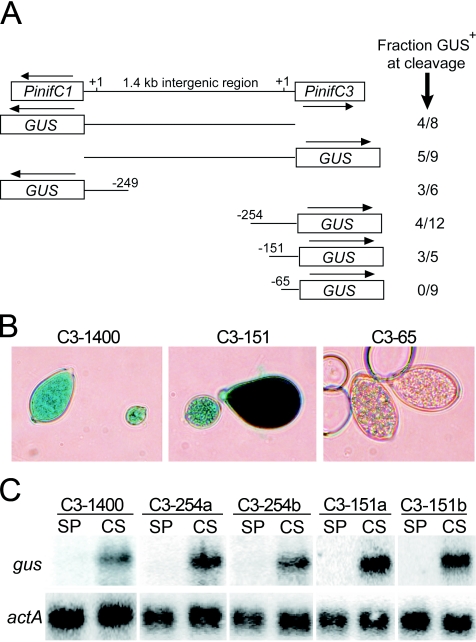FIG. 2.
Deletion analyses of PinifC promoters. (A) Arrangement of PinifC1 and PinifC3 in the P. infestans genome, and GUS fusions made with fragments of their intergenic region. Indicated to the right for each fusion are the fraction of total transformants expressing GUS in cleaving sporangia; transformants in the negative class failed to express GUS at any life stage. Constructs represent, top to bottom, those with the entire 1.4-kb intergenic region, C1-1400::GUS or C3-1400::GUS; one with the 249-nt 5′ region of PinifC1, C1-249::GUS; and those with the 254-, 151-, and 65-nt regions 5′ to PinifC3, named C1-254::GUS, C1-151::GUS, and C1-65::GUS, respectively. (B) Representative transformants obtained using C3-1400::GUS and C3-151::GUS, which produce GUS in cleaving sporangia, and C3-65::GUS, which fails to express the reporter. (C) Blot analysis of RNA from freshly harvested undifferentiated sporangia (SP) and sporangia treated at 10°C for 40 min to induce cleavage (CS), hybridized with a probe for the GUS gene (gus) and actin (actA). The strains shown are a transformant expressing GUS from C3-1400::GUS, two strains with C3-254::GUS, and two strains with C3-151::GUS.

